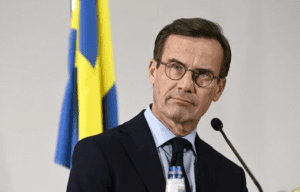
Stockholm is unwilling or unable to fulfill Turkey’s requirements, which it put forward as a condition for approving Sweden’s bid to join NATO, Scandinavian Prime Minister Ulf Kristersson said.
“Turkey confirms that we have fulfilled the conditions we agreed to. But the Turks also want things that we cannot or do not want to give them,” the Swedish prime minister was quoted as saying by Western media on Sunday.
At the same time, Christersson expressed confidence that Turkey would agree to Sweden’s membership in the alliance.
The protocols for Finland and Sweden to join the North Atlantic Council were signed by NATO countries on July 5, 2022. These states will join NATO as soon as all members of the alliance ratify the accession protocols. Of the 30 NATO nations, Sweden and Finland’s membership in the alliance has not been ratified by Turkey and Hungary.
Turkey has blocked the accession process, demanding that the Nordic countries declare Kurdish organizations terrorist and extradite those accused of terrorism, as well as lift the ban on arms supplies to Ankara.
Finnish Defense Minister Antti Kaikkonen suggested in late December that his country would become a member of the alliance by the Vilnius NATO summit of July 11-12, 2023.
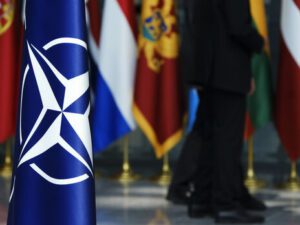
Poland is holding talks with NATO allies and is analyzing the possibility of resorting to Article 4 of the NATO consultation treaty, the Polish presidential office said, citing Polish National Security Directorate head Jacek Syvera.
“President Andrzej Duda just finished a conversation with (NATO Secretary General) Jens Stoltenberg. We are verifying the grounds for NATO Article 4. We are in contact with our allies and awaiting talks with the U.S. side,” the tweet read.
Earlier, Latvian Deputy Prime Minister and Defense Minister Artis Pabriks said of the possibility of invoking NATO Article 4.
“My first reaction would be that after the Russians hit the Polish territory, to engage Art. 4, also as an air defense of the Ukrainian sky,” he tweeted.
Article 4 of NATO states: “The Contracting Parties will always consult each other in the event that, in the opinion of any of them, the territorial integrity, political independence or security of any of the Contracting Parties is threatened.
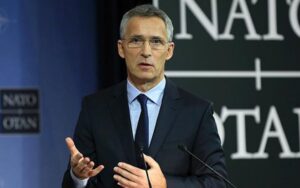
NATO Secretary General Jens Stoltenberg had a conversation with Ukrainian Foreign Minister Dmytro Kuleba in connection with massive rocket attacks on Ukrainian cities on the morning of October 10.
“Speaked to Foreign Minister Kuleba and condemned Russia’s horrendous and indiscriminate attacks on civilian infrastructure in Ukraine. NATO will continue to support the courageous Ukrainian people in fighting the Kremlin’s aggression for as long as it takes,” Stoltenberg tweeted.
civilian infrastructure, NATO, Russian attacks, SECRETARY GENERAL
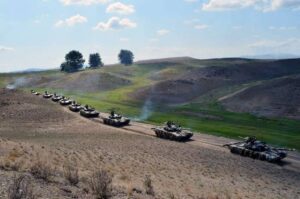
NATO Secretary General Jens Stoltenberg says that Russia is not withdrawing troops, as recently announced, but only moving them in an attempt to regroup and strengthen the offensive in Donbas region.
“We have heard the recent statements that Russia will scale down military operations around Kyiv and in northern Ukraine. But Russia has repeatedly lied about its intentions. So we can only judge Russia on its actions, not on its words. According to our intelligence, Russian units are not withdrawing, but repositioning. Russia is trying to regroup, resupply and reinforce its offensive in Donbas region,” he said a press conference in Brussels on Thursday.
Stoltenberg also said that at the same time, Russia continues to put pressure on Kyiv and other cities. “So we can expect additional offensive actions, bringing even more suffering, ” the Secretary General said.
In this regard, he again called on Russia “to end this senseless war.
Withdraw all its troops.
And engage in talks in good faith. ”
NATO, REPOSITIONING, RUSSIAN UNITS, SECRETARY GENERAL, WITHDRAWING
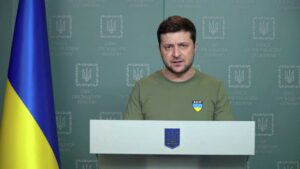
President of Ukraine Volodymyr Zelensky, speaking at a meeting of leaders of states of the Joint Expeditionary Force, said that Ukraine had heard that it would not join NATO member states, the Ukrainian people are beginning to understand this and rely on themselves.
“It is clear that Ukraine is not a member of NATO. We understand this. We are adequate people. For years we have heard about supposedly open doors, but we have already heard that we cannot enter there. And this is true, and we must admit it. I am glad that our people are beginning to understand this and rely on themselves and our partners who help us,” the president said.
He also added that Ukraine currently does not claim to activate Article 5 of the NATO Treaty.
According to the head of state, the Russian invasion of Ukraine destroyed absolutely everything on which security in the region rested.
“I am sure that international security as well. The weight of the organization that we all hoped for, the strength of international conventions have been called into question. And the most powerful alliance in the world, NATO, an alliance that seems [itself], or some of its members, are hypnotized by Russian aggression. We hear now a lot of opinions on the theme of the third world war. That it can start if NATO closes the sky over Ukraine for Russian missiles and aircraft,” Zelensky said, adding that the bombing and destruction of peaceful Ukrainian cities due to the uncovered sky are already taking place.
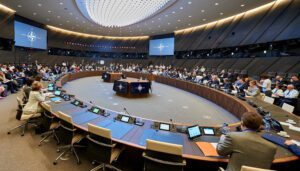
An extraordinary meeting of the North Atlantic Council at the level of defense ministers will be held on March 16.
According to NATO headquarters on Tuesday, the meeting will be chaired by NATO Secretary General Jens Stoltenberg.
The agenda has not been announced, however, based on the war waged by Russia against Ukraine, the heads of the defense departments of the member countries of the alliance will discuss the security situation in the light of recent events. The discussion will take place via teleconference.
This will be the fifth extraordinary meeting of the North Atlantic Council this year, convened due to Russian aggression against Ukraine: on March 4, a meeting of the Council at the level of foreign ministers was held, in which Ukrainian Foreign Minister Dmytro Kuleba took part via video link. Prior to that, on February 25, on the second day of the military aggression of the Russian Federation against Ukraine, the leaders of states and governments gathered for an extraordinary meeting. A few days earlier, on February 22, an extraordinary meeting of the Ukraine-NATO Commission was held at the headquarters, on February 16-17, a meeting of the North Atlantic Council at the level of defense ministers with the virtual participation of the head of the Ukrainian defense department Oleksiy Reznikov, and on January 7 – an extraordinary meeting of foreign ministers.